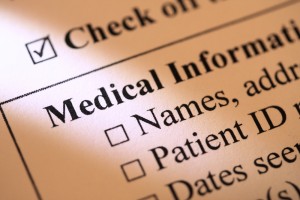-
Mayo Clinic, Partners Seek Medical Records Solution
ROCHESTER, Minn. — Medical records are an invaluable tool in treating patients. When a caregiver has ample information regarding a person's medical history, treatments are more effective and efficient. Unfortunately, few people have complete medical records — due, in large part, to a lack of any universal repository tools for keeping those records. Mayo Clinic, along with its partners in a program called the Southeast Minnesota Beacon Community, is working on solutions to this problem. They are showcasing their work through demonstrations at the 12th annual Healthcare Information and Management Systems Society Conference & Exhibition (HiMSS), from Feb. 20 to 24 in Las Vegas.

In May 2010, southeast Minnesota was one of 17 areas nationwide selected for funding by a U.S. Department of Health and Human Services initiative called the Beacon Community Program. The initiative sought to fund health care entities looking for ways to use technology to improve the efficiency and delivery of health care while cutting costs. The Southeast Minnesota Beacon Community was created through collaboration among Mayo Clinic, Mayo Clinic Health System, Olmsted Medical Center, Winona Health, Allina Hospital Owatonna, and 11 county public health departments in the region. Now, less than two years after receiving funding, the group has been asked to share its work at the HiMSS Conference, using technology and processes it developed to show how health information can be transferred between its member institutions in real time. Two scenarios are being showcased at demonstration kiosks in the HiMSS exhibition hall.
The first scenario demonstrates the generation and exchange of a "Continuity of Care Document," or CCD. In this scenario, a test patient visits Mayo Clinic after being seen at Olmsted Medical Center for diabetes mellitus. Using Health Information Exchange (HIE) technology, Mayo Clinic retrieves a CCD from the patient's visit to Olmsted Medical Center. The document contains information such as immunization records, known allergies and medications being taken, and the results of any tests done during the prior visit.
In the second scenario, a public health nurse is preparing to visit an asthmatic patient in his home, to help solve a problem the patient is having with his medication. The nurse reviews a medication list that is parsed and persisted into the Electronic Public Health Record (EPHR) from other providers' CCDs. The nurse is able to review this list with the patient transfer medications from the list into a current medication reconciliation area and add any additional medications the patient is taking. For the first time the nurse is able to talk with the patient about what medications were prescribed and discuss issues that might prevent the patient from taking the recommended medications.
These scenarios are just a partial demonstration of the full capabilities of Southeast Minnesota Beacon's HIE capacity, which supports the exchange of any consenting patient's information among all providers — including public health — in the region. "Improving HIE technology is vital to improving patient care," says Christopher Chute, M.D., Dr.P.H. co-principal investigator for the Southeast Minnesota Beacon Community. "By making patient information available in one place, we will be able to solve problems more effectively, avoid redundancies and improve continuity in care, which will strengthen care delivery and cut costs."
The demonstrations are scheduled for various times Tuesday, Feb. 21, through Thursday, Feb. 23, at kiosks in the conference center, Hall G, booth #11000, in the ONC/FHA Area of Interoperability Showcase. A complete demonstration schedule is available at the ONC booth, #14824, in Hall G.
Media Contact: Josh Derr, 507-284-5005 (days), newsbureau@mayo.edu







